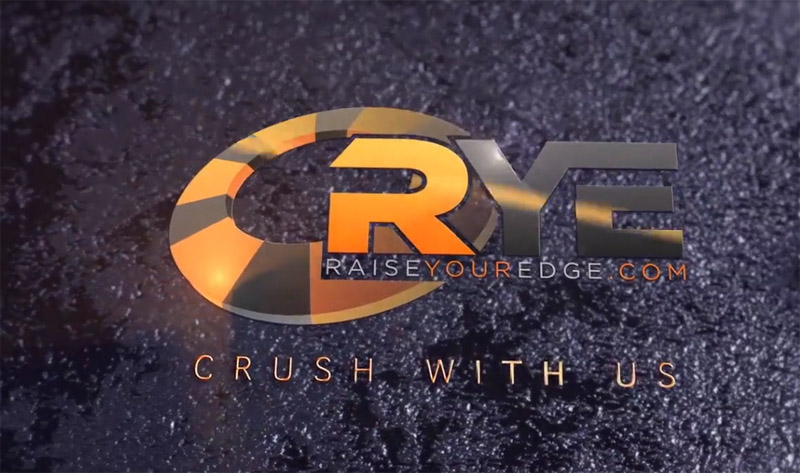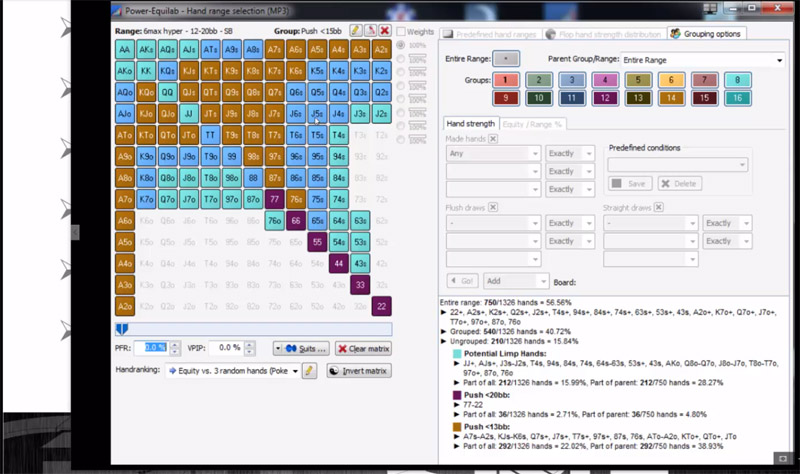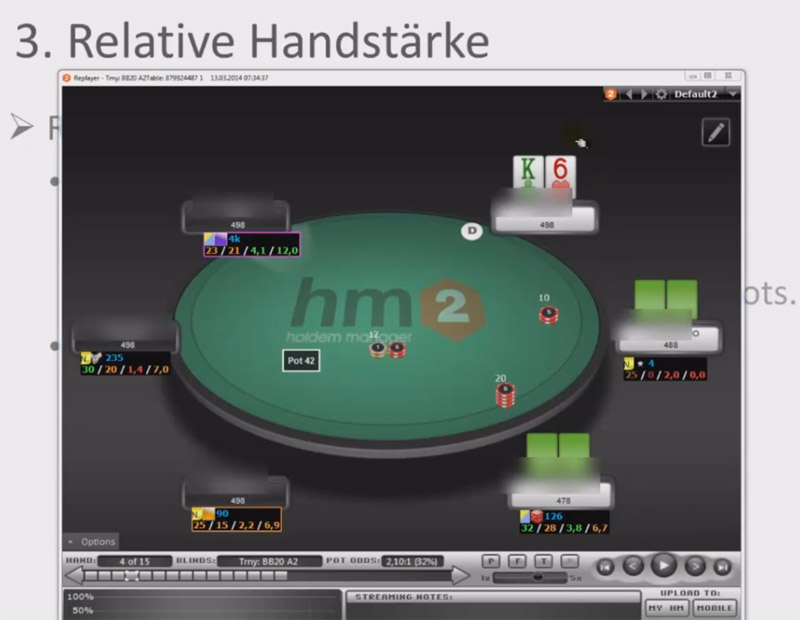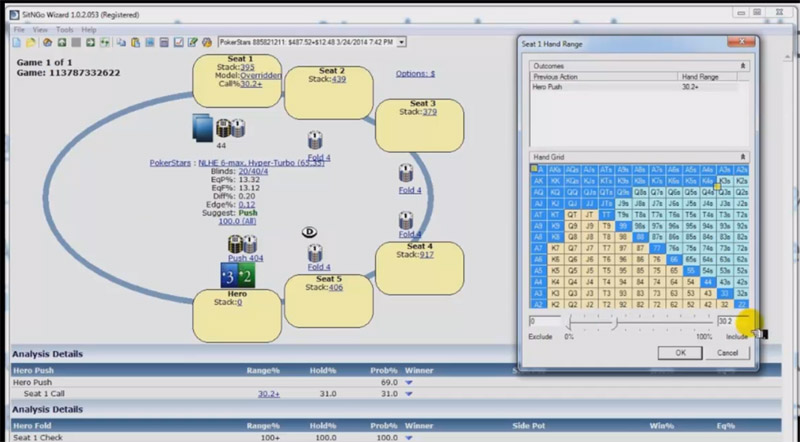Online poker offers a great degree of freedom in terms of setting up different game formats, especially when it comes to tournaments and sit and go’s. On any poker site worth its salt, you’ll find a great variety of sit and go tournaments, with different number of entrants, starting stacks, prize structures, and, of course, blind levels.
In all of this, 6 max hyper SNGs have a very special place. For a long time, these have been the go-to option for serious players looking to put in a large volume and make money from their winnings on the tables as well as any rakeback or rewards on the side.
Featuring shallow stacks and short blind levels, 6 max hypers are certainly a special beast and require many strategic adjustments if you want to be profitable in them. This is especially true for higher stakes on popular poker sites as these attract many solid regs that won’t just let you take their money.
If these games tickle your fancy and you’d like to become good at them, the Crush 6 Max Hyper SNGs course by Raise Your Edge will provide you with a wealth of information. Created by ‘Bencb’, a player who’s been crushing this format for a long time now, this RYE course is very specific and highly targeted, yet contains many nuggets of general poker wisdom you’ll find useful no matter what your primary game of choice might be.
Note: Out of the 103 poker training sites that I have found live on the internet today (yes, I actually found that many), I believe Raise Your Edge are the best there is. If you would like to see my full list of the top poker training resources, check out my post here.
Table Of Contents
RYE Crush 6 Max Hyper SNGs at a Glance
The introductory video of the course pretty much tells you all you need to know about what’s about to come. In it, Ben explains some of the main ideas that served as the inspiration for creating the course. Right at the start, he warns that you won’t get much use from these lessons if you don’t do the required work, which is a very fair warning for any course.
What Crush 6 Max Hypers wants to do is to change the way you think about poker. The content inside isn’t too complicated but it does require some previous sit and go-specific knowledge. Having at least a basic understanding of ICM, bubble, and similar notions is really important. While the course is aimed at high and lower stakes players alike, it’s not meant for complete beginners but rather players with some experience who are looking into 6 max hypers as a possible format of choice.
The course is broken into several large units, namely:
- Preflop play (basics & advanced play)
- Postflop play (c-betting, resteals, push & call)
- Bubble play & collision likelihood
- Heads up
Each of these larger units contains several videos covering specific subtopics. Video lessons are usually split into two main parts, the first section focusing on the theory and the second part going through some hand examples.
If there is one thing where this course may be a bit off, that’s the length of the videos. Most of them are 40 minutes or longer, with some lessons going over one-hour mark. This makes it hard sometimes to stay attentive of the lesson. This is something I previously mentioned about the Tournament Masterclass from Raise your Edge, but credit where credit is due, they have been working hard to improve this.
Bencb also acknoledges this problem by recommending you take the RYE Crush 6max Hyper SNGs course in smaller chunks, doing one or two lessons a week and using the downtime to test and implement new strategies.
Preflop Play in 6-max Hypers
The first several videos of the course focus on the preflop play. Although this may seem as something very simple given the fact how shallow everyone is in hyper sit and go’s, there is a lot Bencb has to say on the topic.
In the first couple of lessons, the course covers general raising ranges from different positions and looks into some common mistakes players are prone to making in this format. One of the things that is really in the focus is paying attention to your opponents, checking their stats, and making notes on their tendencies.
Bencb isn’t trying to represent 6max hypers as something they’re not. He explains that even many of those who play regularly are simply too lazy to take notes on their opponents and keep track. Hence, if you make it a habit to do it yourself, you can get a pretty big edge even before the flop. The key here is consistency and comprehnesive note taking.
Another interesting thing about this course is the fact that it’s not focus solely on GTO and ICM. Instead of just talking about math and percentages, Ben also spends a lot of time going into future consequences of your actions, i.e. future play. You should always have these in mind when making your preflop decisions as sometimes winning a particular pot will give you a chance to put a lot of pressure on the rest of the table.
For example, if you are to win the current pot you will have a massive chip lead over the rest of the table with a number of smaller similar sized stacks remaining: this is the dream situation to be in.
Another interesting concept you’ll find in the preflop section of this course has to do with adjustments. While you do want to adjust to your opponents, it’s dangerous to do it too quickly. Before you change your style (by tightening your opening ranges vs. a certain player, for example), make sure that their play is a consequence of them adjusting to you and not just having a hot run of cards.
Of course, you’ll still find all of the basic stuff in there, such as the breakdown of hand ranges and opening charts for different positions but these were to be expected from a training site and course of this caliber.
Advanced Preflop Ideas in Hypers
After covering the basics, the course moves on to some more complex preflop considerations, such as 3 and 4-betting. Although you don’t usually have many blinds to work with, this doesn’t mean there isn’t room for some creative play.
Bencb brings clear strategies on how to construct your 3-betting ranges based on understanding the type of the opponent you’re up against and their tendencies. He explains differences between merged and polarized 3-betting strategies and shows how to make best use of both in theory and in practice, through a number of hand examples.
The 4-betting discussion is quite interesting. Can you profitably 4-bet bluff in 6max hyper SNGs and leave yourself with enough chips to fold without feeling committed? These are definitely more advanced concepts but it’s these kinds of play that will give you an edge over less-skilled opponents who aren’t doing enough to keep up.
Postflop Strategy & Ideas
The postflop section of the course naturally continues on the previous lessons. There is still plenty of play left after preflop, especially during early levels of 6max hypers. So, in the next few videos, ‘Bencb’ looks into things such as:
- Common mistakes in terms of c-betting
- Failing to plan for turns and rivers ahead of time
- Determining good bet sizing
- Making sure you’re betting for value enough
Having a lot of experience in these, Ben is aware of many postflop leaks found even with some of the regs. For example, finding spots to get some thin value bets in is very important in the long run and you shouldn’t be afraid to go for value with what might seem like a ‘marginal’ hand. Given the structure in these tournaments, you just can’t afford to skip on too many value spots.
He also looks into some good bluffing spots after the flop. In addition to considering the board texture and hand ranges, Ben also discusses other important factors such as ICM pressure, bubble, etc. Your bluffs will be more efficient if you have a stack that covers or could seriously cripple the opponent.
All of these theoretical concepts are accompanied by many actual hand examples. This is one of the strongest suits of the Crush 6max Hyper SNGs – everything that’s being discussed is later explained through play examples, which really makes things much easier to understand and keep up with. Plus, given the length of the videos, having some hands thrown into the mix is a nice way to break up the content.
The video talking specifically about playing out of position brings some more concepts you could add to your strategy. In this section, ‘Bencb’ focuses a lot on the stats and emphasizes the importance of profiling the players you’re up against. Deviating from your default strategies to take advantage of any leaks you recognize in another player’s game will increase your ROI.
Pushing & Calling
Regardless of your strategy, knowing your shoving and calling ranges is essential in 6max hypers. In this section, Ben once again talks about what you might call standard play but also explains that it should be used as a guideline more than anything else.
Nash ranges are what many people use in these tournaments but deviating from it in specific spot is required if you want to be better than the rest of the field. Figuring out when to do it, though, and against what players does require some analysis.
In these spots, it’s really important to consider your opponent and figure out who they are and what their tendencies are like. Fish will usually have wider calling ranges than regs so before you decide to push, keep that in mind. Against very tight and passive opponents, you can get away with a min-raise without having to put your entire stack on the line, etc.
When you’re on the other side of the fence, i.e. considering a call, you should keep all these things in mind as well. Sometimes it is also perfectly fine to skip on marginally +EV calls when you’re at a soft table or have a good position because you’ll have plenty of opportunities to win chips without risking your entire stack by calling a shove.
Collision Likelihood & Bubble
Making money is very important in 6max hypers and sometimes the best way to do it is by not doing anything. ‘Bencb’ describes this idea as the ‘collision likelihood’, i.e. the likelihood of other two players getting it all in and one of them being eliminated, securing you make the money.
If remaining two players are too loose, you might be best off sitting on the sidelines and letting them do the hard work for you. Not thinking about the collision likelihood can be a quite big mistake on the bubble so Ben tries to really hammer home its importance.

Your calling range vs. good regulars should be wider than against the fish as they'll have wider shoving ranges
At the same time, if you find yourself in the situation with one reg and one bad player, you should be more willing to get your chips in the middle against the reg. Ideally, you want to go heads up against the ‘fish’ so taking marginally +EV spots against regs and avoiding them against the bad player is the optimal strategy on the bubble.
Wrapping it Up: Heads Up Play
The final segment of the Crush 6max Hyper SNGs course focuses on the heads up play. It contains three videos, the first of which explains theoretical concepts while the other two are rich in hand examples and analysis of real play.
Like in other lessons, ‘Bencb’ suggests some strategic changes and adjustments based on your opponent and stack size. He also discusses some of the typical mistakes in HU, such as having unbalanced SB ranges, under-defending from the BB, etc.
All of these ideas are nicely underlined and further explained in hand example videos so definitely take time to watch these if you want to sharpen up your heads up skills.
Summary: Who’s This Course for & Is it Any Good?
There isn’t much material out there covering 6max hypers specifically, especially not presented in this way of well-structured and organized manner. So, this course by Raise Your Edge is quite welcome and very useful for anyone looking to improve their play in this particular format. The fact it’s been created by the man with a proven track-record with poker training makes it that much better.
However, this is a very targeted and highly specific course.
You will need to have some solid poker foundations going into it if you want to really make most out of it. For new players looking for general sit & go coaching, there are better options out there. In fact, learning strategy for hypers and trying to apply it in normal SNGs can even hurt your results.
This isn’t to say that Crush 6max Hyper SNGs isn’t good. It’s excellent for what it’s intended for as long as you’re willing to take concepts and ideas from it to transform your game. Take it in smaller chunks, as suggested by the course creator, and give yourself enough time to make necessary adjustments in one segment before moving on to the next one.
If you have the willpower and patience to do things right and keep your eyes on the prize, this course is well worth the monetary investment of $199. But it will also require you to invest some of your time and effort to make it really work for you.






